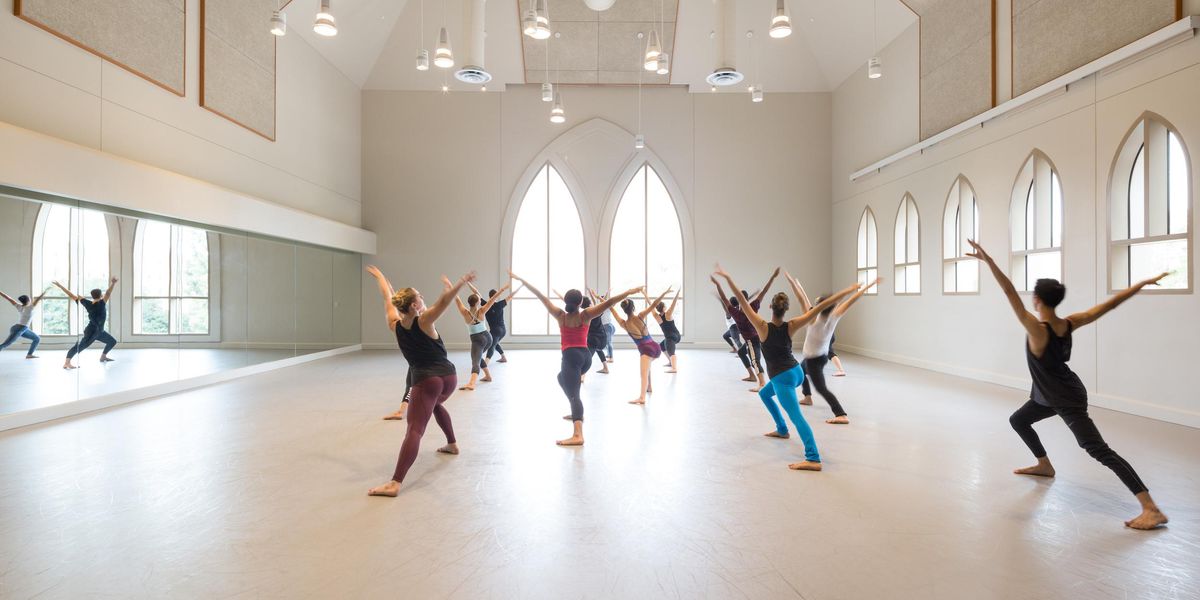Looking Back to Move Forward
Though it premiered almost thirty years ago, there is something refreshing about Murray Louis’ Four Brubeck Pieces. On stage this week at Juilliard, the kinetic modern work is, like the title says, set to four of Dave Brubeck’s 1960s jazz tunes—a welcome departure from the all-too-frequent thumping and electronic contemporary dance scores. By the fourth movement “Take Five” (Paul Desmond being the genius behind the familiar melody), the dancers transform into musicians, their bodies mimicking the quartet onstage. One dancer, for instance, strikes imaginary piano keys—before getting carried away with the saxophone—and others tip-toe on, heads bobbing to the bass line. It’s invigorating to enjoy a piece that’s simply fun, one that’s not filled with a complex storyline, heavy drama or anguish. And while the costumes also seem like a throwback to an earlier time, I’m sure I’ve seen a similar line of black-and-white striped rompers at American Apparel.
As usual, the talented Juilliard students show an extreme range in their stylistic capabilities throughout the evening. In addition to Louis’ work (which also has its quieter moment in the moonlit section “Koto Song”), they perform Paul Taylor’s 1983 balletic work Sunset and William Forstyhe’s brilliant One Flat Thing, Reproduced (2000). If you haven’t seen this Forsythe composition live, I suggest hopping on the next train to New York City. Get ready for your mind to be blown.
From left: Alexander Anderson, Taner Van Kuren, Molly Griffin, Robbie Moore (in the air), Kristina Bentz, and Blake Krapels in William Forsythe’s electric
One Flat Thing, Reproduced.
Photo by Rosalie O’Connor, Courtesy Juilliard
The program, Juilliard Dances Repertory, is the annual spring ode to masterpieces of the past. (The fall is dedicated to new work.) The selections are always diverse, equal parts history lesson and performance. In the last few years we’ve seen rep including Nijinska’s Les Noces, Morris’ Grand Duo, Robbins’ N.Y. Export: Opus Jazz, Cunningham’s Summerspace, and Limón’s The Waldstein Sonata.
Raymond Pinto (standing) with Michele Carter in Paul Taylor’s
Sunset.
Photo by Rosalie O’Connor, Courtesy Juilliard
“The goal,” writes Juilliard dance department artistic director Lawrence Rhodes in the program notes, “is to continue the education of our students by challenging them to take on roles in already established classics of our dance history.” I can’t help but think that this philosophy is what makes so many Juilliard grads some of the top dancemakers today. (Think Andrea Miller, Robert Battle, John Heginbotham, and Peter Chu, to name a few). Having such a strong grasp of where dance has been—as well as what’s going on today—helps light the path for where it can go.
See Juilliard Dances Repertory, April 3–7, 2013 at The Peter Jay Sharp Theater in New York City. Visit www.juilliard.edu for details.




